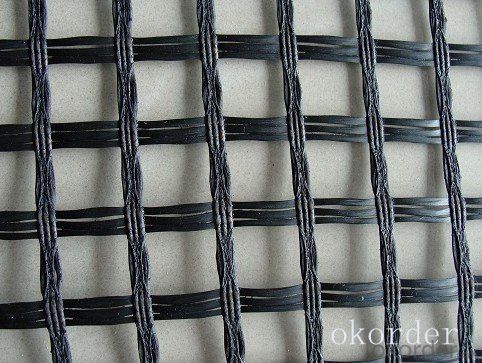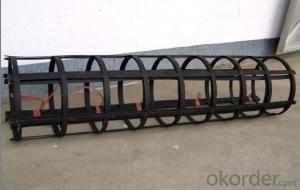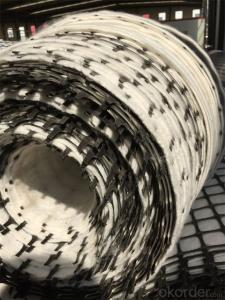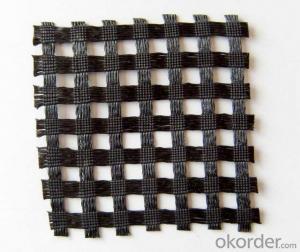Tensar Biaxial BX Geogrids - High Strength PP Plastic Polypropylene Geogrids Made in China
- Loading Port:
- China main port
- Payment Terms:
- TT OR LC
- Min Order Qty:
- 1000 m²
- Supply Capability:
- 10000000 m²/month
OKorder Service Pledge
OKorder Financial Service
You Might Also Like

PP Plastic polypropylene geogrid biaxial
The properties of Biaxial Geogrids, made in Polypropylene (PP) with their square apertures, high tensile strength and optimised geometry of nodes and ribs make them equal to any other similar material.
A geogrid is geosynthetic material used to reinforce soils and similar materials. Geogrids are commonly used to reinforce retaining walls, as well as subbases or subsoils below roads or structures.
Model Number:
20KN/M--50KN/M
Material:
Plastic
width:
1-6m
Certificate:
CE,ISO
Our Service
Quality assurance
1.On a regular basis or as per your request,we entrust national testing agencies to conduct quality inspections
2. Strictly in accordance with the ISO9001-2008 international quality system standard,we monitor and manage the whole process throughout production,quality testing,and measurement to ensure product quality
3. For quality-related construction delay or substandard construction(except for damage or losses due to customer’s responsibility or irresistible natural disasters),we have refunding,replacement,and repair services.We will respond to customers’ feedbacks on quality issues within 24 hours.
Packaging & Shipping
Packing: PLASTIC FILM INSIDE, AND WOVEN BAG OUTSIDE
Shipping: About 15 days after receipt the deposit
FAQ:
Q: What kind of payments does jenor support?
A: T/T, L/C, Cash are accepted.
Q: Do you charge for the samples?
A: Accordeing to our company policy, the samples are free, we only charge the freight fee. And we will return the freight fee during the next order.
Q: Can you produce according to customers' design?
A: Sure, we are professional manufacturer, OEM and ODM are both welcome.
Q: Do you have other products?
A: Yes, please check the pictures:
- Q: What is the typical thickness of a geogrid?
- The typical thickness of a geogrid can vary depending on the specific application and manufacturer. However, most geogrids range in thickness from 0.5 to 3 millimeters.
- Q: Are geogrids suitable for reinforcement of steep slopes?
- Yes, geogrids are suitable for reinforcement of steep slopes. Geogrids provide stability and reinforcement to the soil, preventing erosion and slope failure. They are designed to distribute the load and increase the strength of the soil, making them an effective solution for reinforcing steep slopes.
- Q: Can geogrids be used in mining tailings management?
- Yes, geogrids can be used in mining tailings management. Geogrids are commonly utilized in mining operations to reinforce and stabilize soil and tailings materials. They can be installed to improve the strength, stability, and resistance of tailings dams or containment structures, reducing the risk of slope failure or leakage. Additionally, geogrids can enhance the dewatering process, facilitating the consolidation and compaction of tailings for improved management and disposal practices.
- Q: Are geogrids suitable for use in mine tailings containment?
- Yes, geogrids are suitable for use in mine tailings containment. Geogrids are high-strength, durable materials that can effectively stabilize and reinforce soil or rock structures. They can be used to create stable walls, slopes, or liners in tailings containment areas, helping to prevent erosion, control flow, and enhance the overall stability of the containment system.
- Q: Unidirectional tensile plastic geogrid manufacturers which good
- (1) the plastic geogrid plastic geogrid is a kind of polymer material with square or rectangular shape which is formed by stretching, and it can be used as one kind of unidirectional stretching and biaxial stretching according to the different direction of stretching in the manufacturing process. The utility model is punched on the extruded polymer plate (raw material is polypropylene or high-density polyethylene), and then directionally stretched under the heating condition
- Q: Which is better than geotextile and geogrid
- Drainage protection isolation can also be used for road subgrade reinforcement geogrid is mainly used in highway railway roadbed reinforcement and retaining wall reinforcement
- Q: Can geogrids be used in reinforcement of mechanically stabilized earth walls for bridge abutments?
- Yes, geogrids can indeed be used for reinforcement of mechanically stabilized earth walls for bridge abutments. Geogrids are commonly used in such applications as they provide additional tensile strength to the soil, improving its overall stability and preventing potential failure. By distributing and transferring loads, geogrids help increase the load-bearing capacity of the soil, making them an ideal choice for reinforcing mechanically stabilized earth walls used in bridge abutments.
- Q: Can geogrids be used in retaining walls for recreational areas?
- Yes, geogrids can be used in retaining walls for recreational areas. Geogrids are commonly used in retaining wall construction to increase stability and enhance soil reinforcement. They can improve the overall strength and durability of the retaining wall, making it suitable for supporting recreational areas such as playgrounds, sports fields, or park spaces.
- Q: What are the design considerations for geogrids in reinforced soil slopes?
- Some of the key design considerations for geogrids in reinforced soil slopes include the selection of appropriate geogrid material and strength, determining the required spacing and orientation of the geogrid layers, considering the slope geometry and stability requirements, evaluating the soil properties and potential for settlement and deformation, assessing the long-term durability and performance of the geogrids, and ensuring adequate constructability and installation techniques. Additionally, factors such as water drainage, environmental conditions, and cost-effectiveness should also be taken into account during the design process.
- Q: What are the limitations of using geogrids?
- Some limitations of using geogrids include their high initial cost, potential for damage during installation, limited effectiveness in certain soil conditions, and the need for proper maintenance and monitoring to ensure long-term performance. Additionally, geogrids may not be suitable for all applications and may require technical expertise for proper design and installation.
Send your message to us
Tensar Biaxial BX Geogrids - High Strength PP Plastic Polypropylene Geogrids Made in China
- Loading Port:
- China main port
- Payment Terms:
- TT OR LC
- Min Order Qty:
- 1000 m²
- Supply Capability:
- 10000000 m²/month
OKorder Service Pledge
OKorder Financial Service
Similar products
Hot products
Hot Searches
Related keywords
































